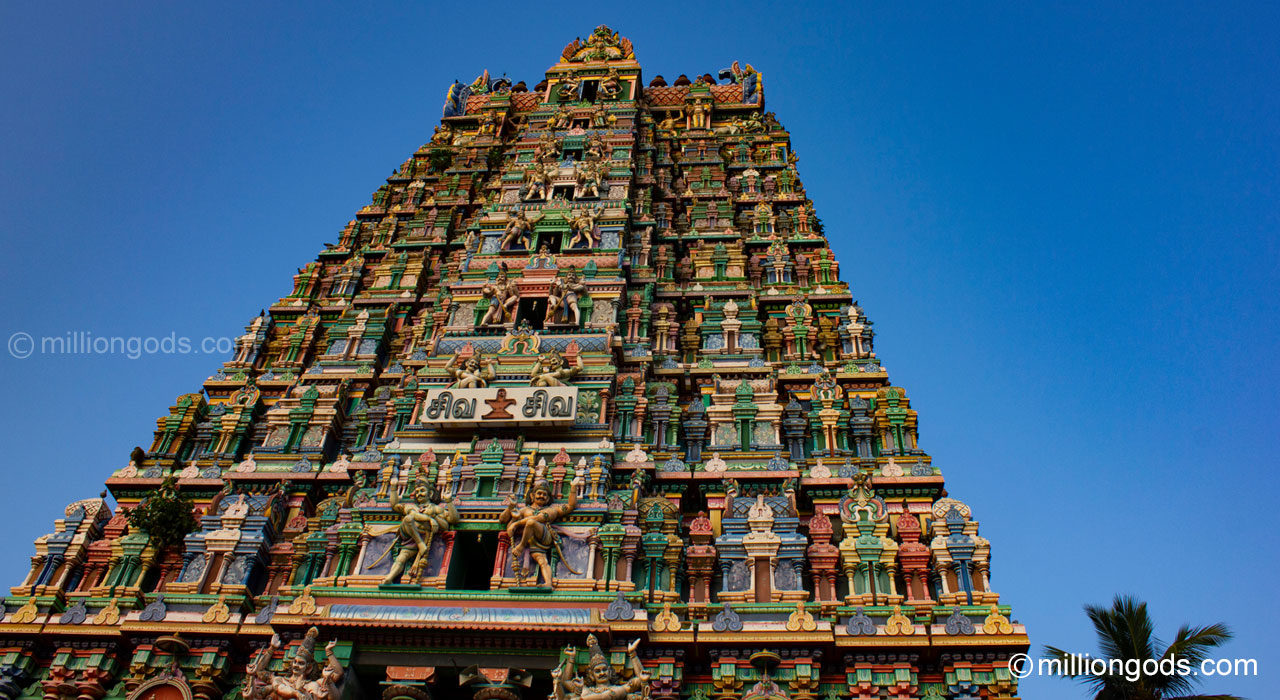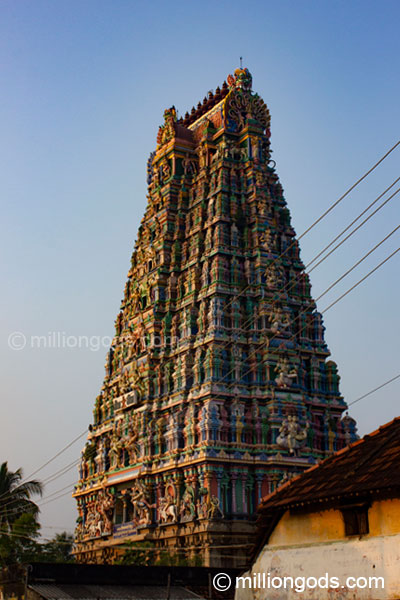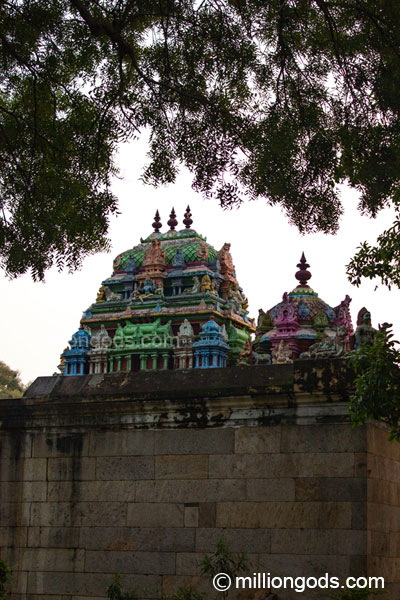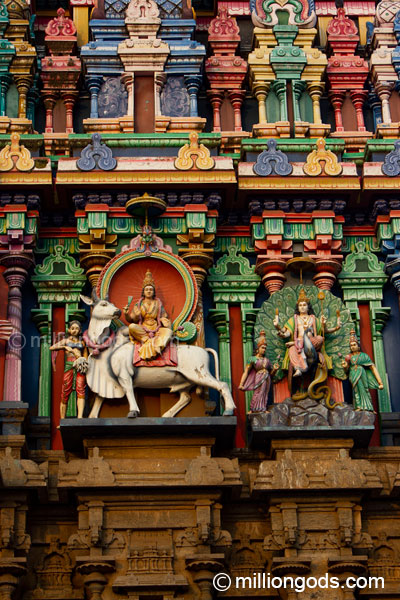Aadhi Ratneswarar (also called Ajagajeswarar), facing east
Thiruvadanai – Glorified

God
Goddess
Anbayiravalli (also called Snekavalli), facing east
Other Deities
Agastya Vinayaka, Devachandar, Surya with consorts Usha and Pratyusha, Markandeya Vinayaka, Varuna Vinayakar, Thaneeswarar, Thaneeswari, Naagar, 63 Nayanmar, Kannimoola Vinayakar, Somaskandar, Sidhdhi Vinayakar, Arjuna Lingam, Gowri, Varuna Lingam, Gomatheeswarar, Yogalingam, Viswanathar, Visalakshi, Varadaraja Perumal with Sreedevi and Bhoodevi, Brigulingam, Muruga with consorts, Gajalakshmi, Nataraja, Bhairava, Chandran with consorts Karthigai and Rohini, Saneeswarar.
Sanctum Niches – Narthana Ganapathi, Dakshinamurthy, Lingotbavar, Brahma, Durga, Chandikeswara.
Amman Shrine – Navagraha, Rettai Vinayakar, Sanctum Niches – Ichadevi, Kriyadevi, Gnanasakthi Chandikeswari
Thiruvadanai is known by other names including Parijathavanam, Vannivanam, Vilwavanam, Aadhirathneswaram, Markandeyapuram, Gomutheesam, Vijayeswaram, Ajagajapuram, Padmapuram, and Mukthipuram. Thiruvadanai is a large east-facing temple with a majestic 130 feet, 9 tiered Rajagopuram. The temple has 2 Prakarams. There is a large temple tank on the east side outside the Rajagopuram. A smaller Theertham Tank is on the northeast side in the outer Prakaram. The outer Prakaram is filled with trees and a beautiful circumambulatory path goes around to the east-facing Goddess Shrine situated on the north side of the Prakaram. A large Lingam and Nandi are outside the Goddess Shrine in the outer Prakaram. A long corridor from the Rajagopuram leads inside the large inner Prakaram. The corridor has 4 Mandapams on the sides with about 36 pillars each. The main deity is made of a blue-colored stone. The rays of the sun are said to fall on the main deity and goddess in the month of Maasi (February-March).
Ksheera Kundam, Varuna Theertham, Agastya Theertham, Surya Theertham, Markandeya Theertham
Sacred Tree (Sthala Vriksham) – Vilwam (Aegle marmelos)



History
Thiruvadanai has been visited and praised in his hymns by Thirugnanasambandar (7th Century CE). Saint Arunagirinathar (15th Century CE) has visited and sung hymns in praise of Lord Muruga here at Thiruvadanai in his Thirupugazh. The temple is under the management of the Ramanathapuram royal family presently represented by Rani Indradevi.
Legend
Thiruvadanai is believed to have been filled with Vilva trees and hence also called Vilvavanam. Legend has it that Vaaruni, the son of Varuna, God of rain was cursed by a Sage to have an elephant’s body and a goat’s head. He is believed to have regained his original form after worshiping Lord Shiva at the Thiruvadanai temple. Hence the name of the place became Thiruvadanai – (Thiru- sacred; Adu- goat, Aanai- elephant). Sages Agasthya, Markandeya, Arjuna, and the holy cow Kamadenu are believed to have worshiped Lord Shiva here at Thiruvadanai.
Directions
Thiruvadanai is about 95 kilometers east of Madurai via Sivaganga on the road to Thondi. Thiruvadanai is about 60 kilometers north of Ramanathapuram via Thondi.
Stay and Food
None locally, but for Tea Shops. The closest are Madurai, Ramanathapuram, and Rameswaram.
